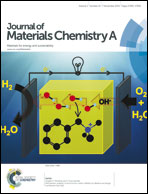Controlled synthesis of FeP nanorod arrays as highly efficient hydrogen evolution cathode†
Abstract
For the first time, self-supported FeP nanorod arrays were developed on a HCl-treated Ti foil (FeP NAs/Ti) via low-temperature phosphidation of α-FeO(OH)/Ti precursor and were further used as a novel hydrogen evolution cathode (HER), demonstrating exceptional catalytic activity in acidic media, superior to all reported non-Pt HER electrocatalysts, while offering an innovative method to synthesize metal phosphides with well-controlled nanostructure and morphology.


 Please wait while we load your content...
Please wait while we load your content...